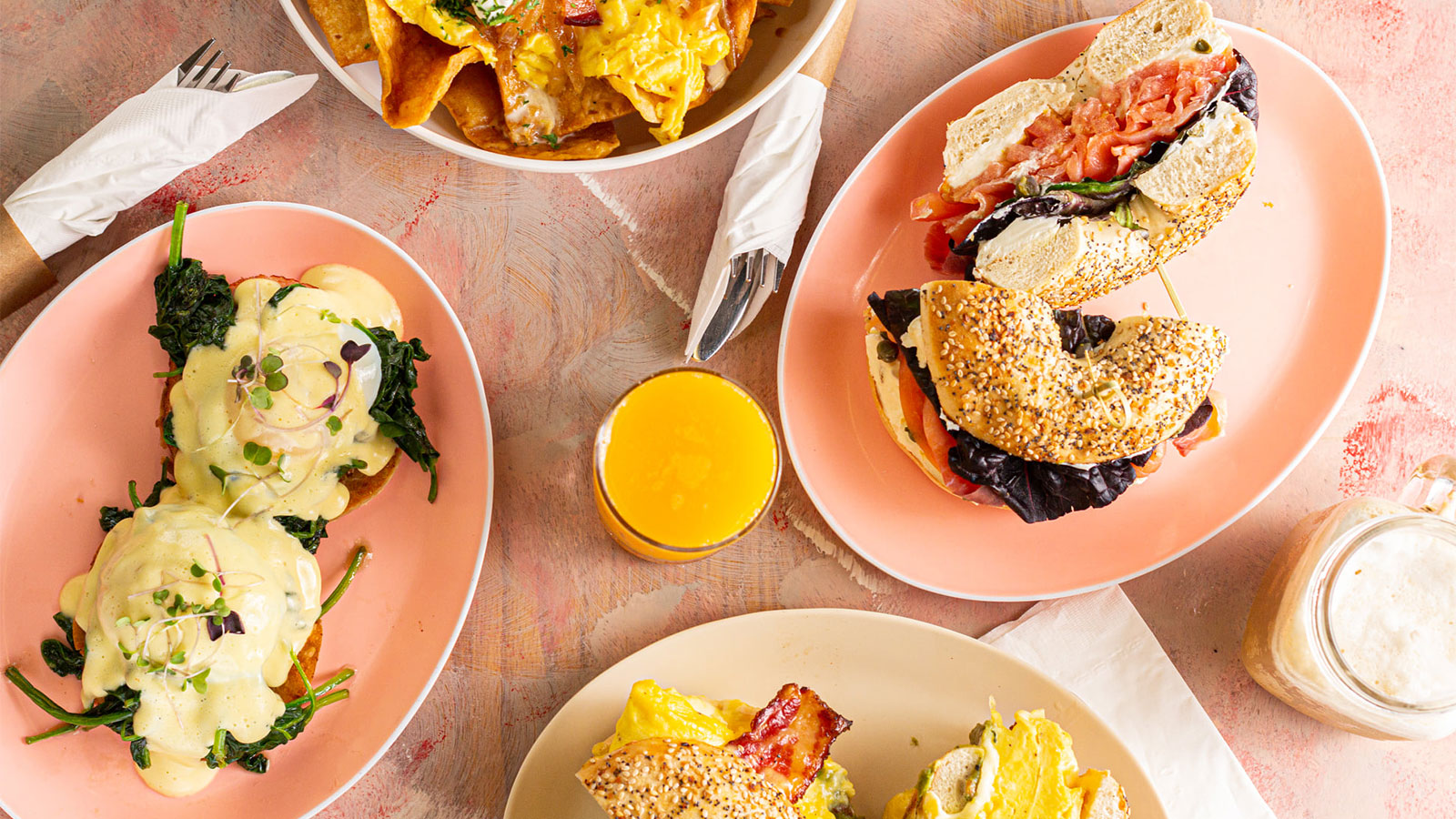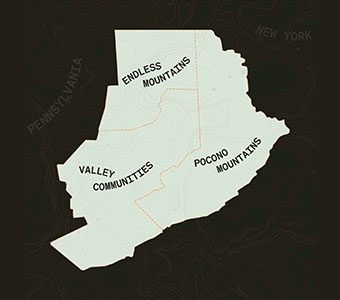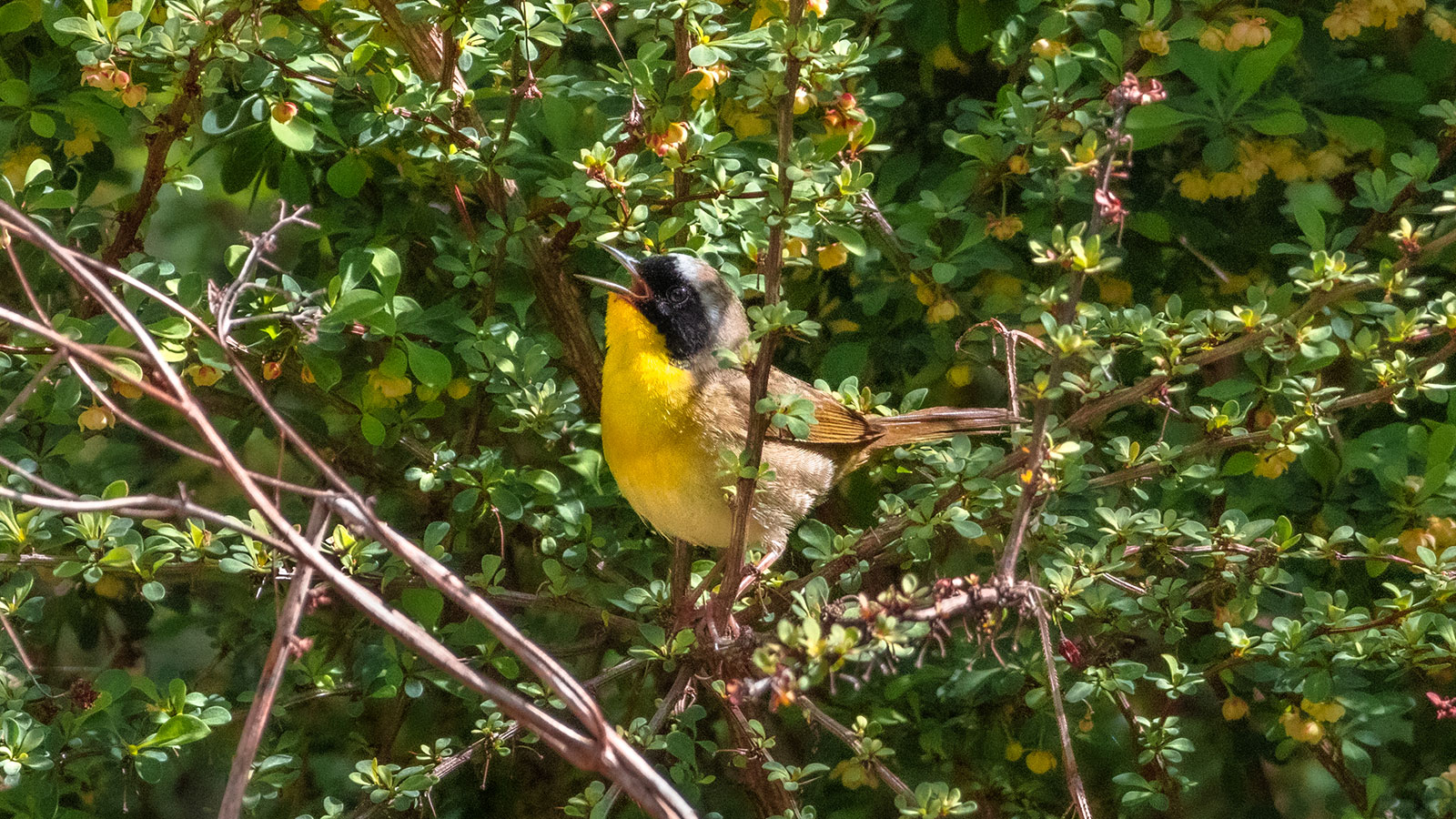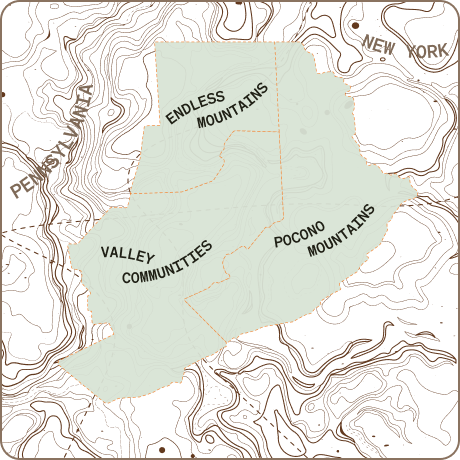DiscoverNEPA is partnering with North Branch Land Trust, a nonprofit that conserves the natural, working and scenic landscapes of NEPA. They’ll provide conservation tips and give us a look at their protected lands. Learn how you can join NBLT and do your part to protect NEPA’s natural resources.
How Controlled Burns Could Save a Species
On a late spring morning in a small field of stunning wildflowers, Isabella Petitta and her lab partner are keener on the insects zipping around from bud to bud. Bees of all shapes and sizes are sneaking into the blue shell-like blooms of the Lupinus perennis. The researchers had already measured the lupines, counted the blooms and recorded the other flora thriving in the area. Now, they are watching the insects pollinating them.
By November, they will be setting this same field on fire using a highly controlled protocol for safety. The researchers are from Penn State’s Ecology Department and traveled to Luzerne County to collect data from one of their six historical lupine population research sites. Their goal is to examine the effects of controlled burns and fencing on the restoration of lupine populations in Pennsylvania.

This plant is an important host to native butterflies, including frosted elfins, duskywings and the endangered Karner blue. While habitat destruction and fragmentation are the biggest threats to these plants, the problem that this research team is examining happens to be a lack of wildfires.
“In a strange way, we’ve just gotten too good at stopping fires,” Petitta said.
Lupine beans are incredibly tough, and those seeds often need to be roughed up for germination success. Petitta noted that there are a variety of natural and unnatural ways to disturb the seeds for germination being investigated, yet mowing, allowing ungulates to graze or encouraging wildfires to burn for a time are not part of what traditionally comes to mind when we think of habitat restoration.

Petitta was preparing for her graduate program at Penn State when she became involved in this project. “In the past, one of my co-advisors, Autumn Sabo, had worked with lupines in Wisconsin, and my other co-advisor, Margarita López-Uribe, is an expert in wild bee ecology and evolution. From there the research team developed with a variety of specializations including forestry, botany, entomology and genetics. And collectively, with the other organizations involved, we had all the knowledge to investigate the lupine system.”
Petitta’s specialty is entomology.
On site visits, Petitta noticed larger, denser populations of bees from the Osmia genus. Bees have special hairs for collecting pollen called scopa, and while most bees have hair on their legs, Osmia have fuzzy abdomens.
“When they enter the shell-like flower, the anthers with pollen are pointing upwards, and so the pollen ends up on the underside of the bee. It’s possible that Osmia are lupine specialists based on the location of these hairs.”

I asked if the team is one of the first to consider the direct relationship between lupines and Osmia.
Isabella hesitated, “It’s not something that we have found highly reported in existing literature related to lupines, but this genus is known to specialist on the plant family Fabaceae.”
Incredibly modest, but the truth is this sort of integrated approach considering entomology, genetics and other fields in addition to a botanist’s expertise allows this study to consider a much wider scope of variables than it had in the past.
As with many North Branch Land Trust conservation easements, the area currently being studied is privately owned and, as such, not publicly accessible. Regardless, protecting even the most inaccessible habitats with meaningful research-based management can inform best practices that improve the overall health of Pennsylvania’s natural resources. North Branch Land Trust will continue to check in on the Penn State lupine research team in the coming months to uncover more about what they have learned and what we can do in our own backyards to conserve the lands we hold dear.
NEPA Invaders: What You Can Do to Protect NEPA’s Natural Resources
When we look out in the late spring and see how strikingly green NEPA is, it can be hard to believe that some of that pure, uncultivated beauty is, in fact, a danger to our natural resources. Invasive species threaten our region’s unique ecology, but we can all take action to preserve the habitats that we hold dear.
Invasive species are non-native plants, insects and animals introduced to a new area who not only thrive but also out-compete native species for resources. Not every non-native is invasive. Most exotic species would fail to survive in NEPA’s seasons and weather without human intervention. Imagine leaving a cactus at Ricketts Glen over the winter!
Other non-native species may become naturalized to an area, where they are able to survive without necessarily harming other organisms in their environment. Such is the case of the round disc snail, originally from western and central Europe, whose tiny leaf-litter colonies are physically incapable of habitat domination. However, far too many species find a way to hitch a ride to a new area and totally wreck the joint.

While all invasive plants are weeds, not all weeds are invasive plants. North Branch Land Trust’s Land Protection and Stewardship Coordinator, Rylan Coker, shared with us the most problematic plants and animals he sees here in NEPA: “It seems like every place has a challenge with their own particular species. Where I grew up it was Dyer’s woad, but here, Japanese barberry is one of the worst I see. It spreads so fast into dense, spiky thickets that is probably only good for bunnies to hide in. I’ve personally noticed correlation between ticks and areas with lots of barberry, but I can’t say for certain.”
Coker further explained that Japanese barberry, like many plants, are allelopathic, meaning that they excrete biochemicals that can have detrimental effects on other species. While native allelopaths like white pine trees use their powers for self-defense, invasive biochemicals can poison an area to native growth entirely.

NEPA is host to invasive fauna as well. One of North Branch Land Trust’s wetland properties has dealt with Chinese mystery snails, and yes, that is their official name. These large snails are simply more adept at obtaining resources in NEPA environments, leaving native species hungry and lacking suitable homes. Other aquatic nuisances include the rusty crayfish, who is native to North America, just not the Susquehanna and Lehigh River Basins.
Invasive species arrive in new lands through a variety of means, but it is almost always human intervention. Sometimes this is an accident, and occasionally it happens on purpose. Snails and other aquatic invertebrates often find their way to new lands by catching rides on boats or kayaks. Purposeful introduction often occurred with practical plants, not knowing their potential for takeover. Garlic mustard and Japanese hops are invasive herbaceous species that also happen to be tasty herbs. Many invasive plants have simply escaped from gardens to make a new home for themselves.
If you want to help protect NEPA from invasion, the best thing you can do is landscape and garden with native species. It only takes a few seeds for an exotic to become an invader, and choosing the right plants for your property can also help native pollinators flourish! Also be aware of how much fertilizer is being used as they can give invasives a major boost.
When adventuring outdoors, be sure to clean your shoes and equipment before going to a new location to avoid tiny hitchhikers.
Finally, you can become a citizen scientist and help Pennsylvania map our invasive problem. Learn to identify a few species and get out in nature. Whenever you find an invader, report it to PA iMapInvasives. This organization gathers data on invasives in Pennsylvania to educate and eradicate, but they depend on reporting from the public.
While you appreciate NEPA’s gorgeous late spring green, stay vigilant. Know your invasives and help North Branch Land Trust preserve our precious lands, waters, vistas and skies.
Featured photo (top) by Nash Turley
NBLT owns several nature preserves that are open to the public. Visit these local preserves for excellent hiking trails, wildlife watching and more.




